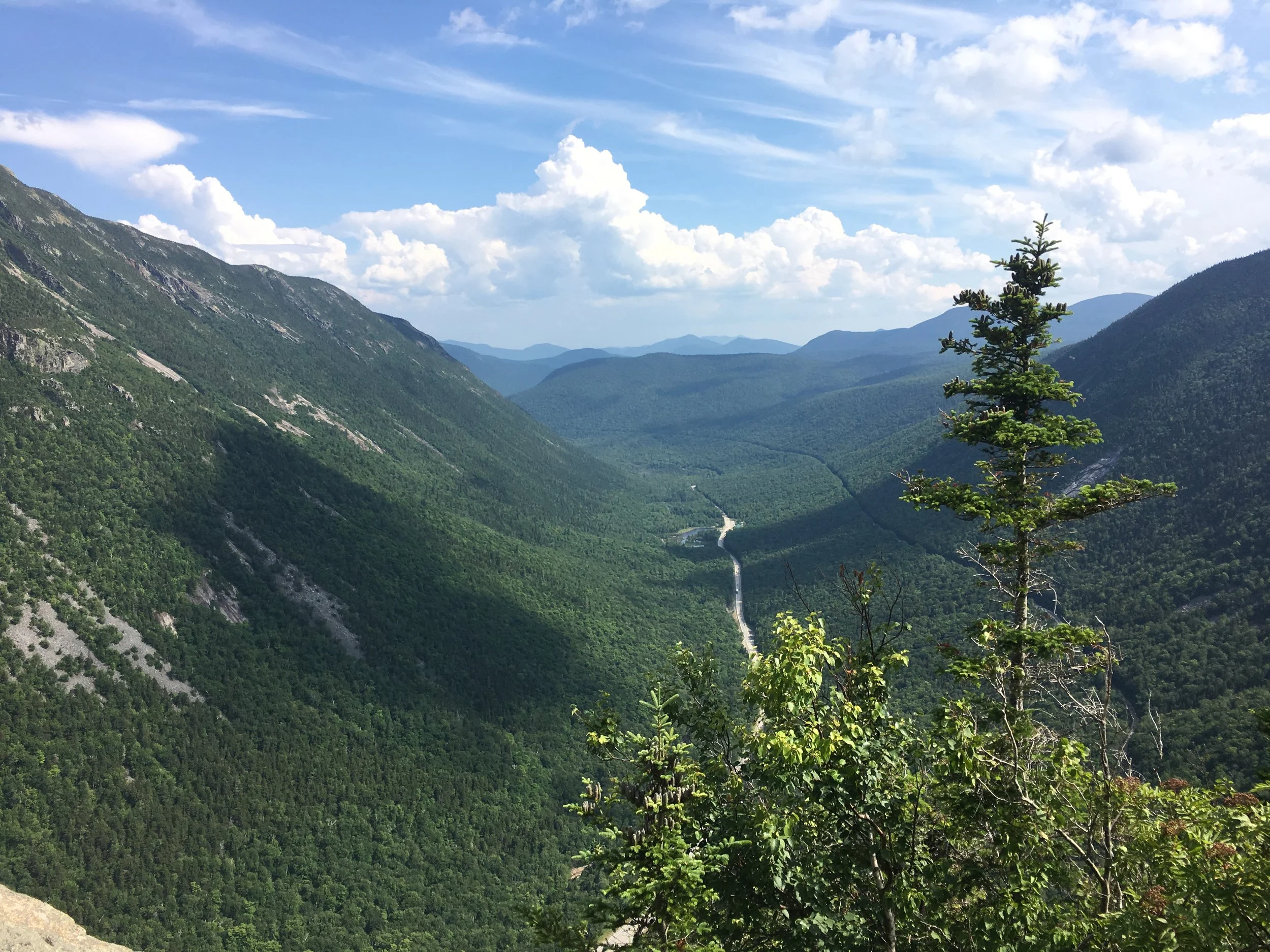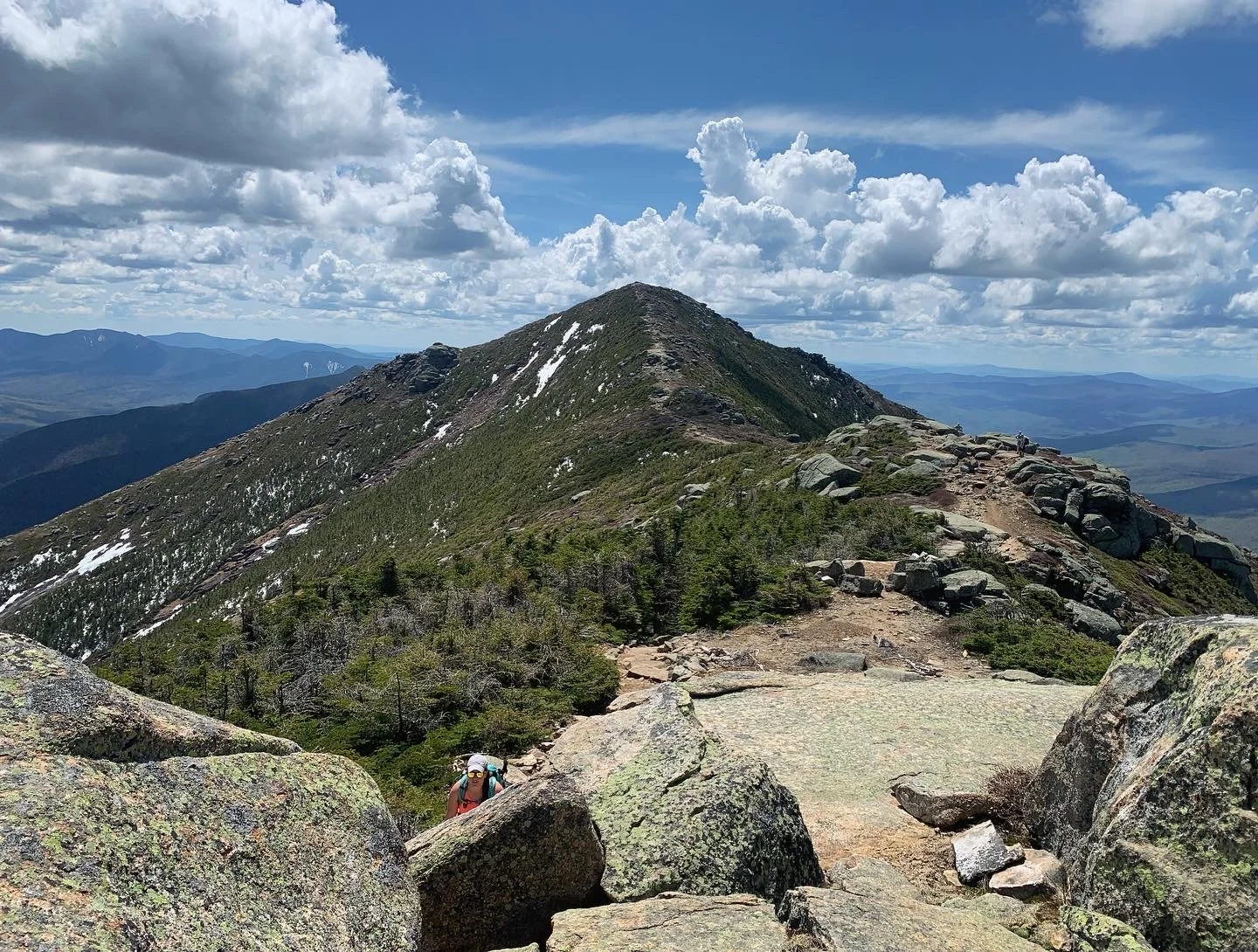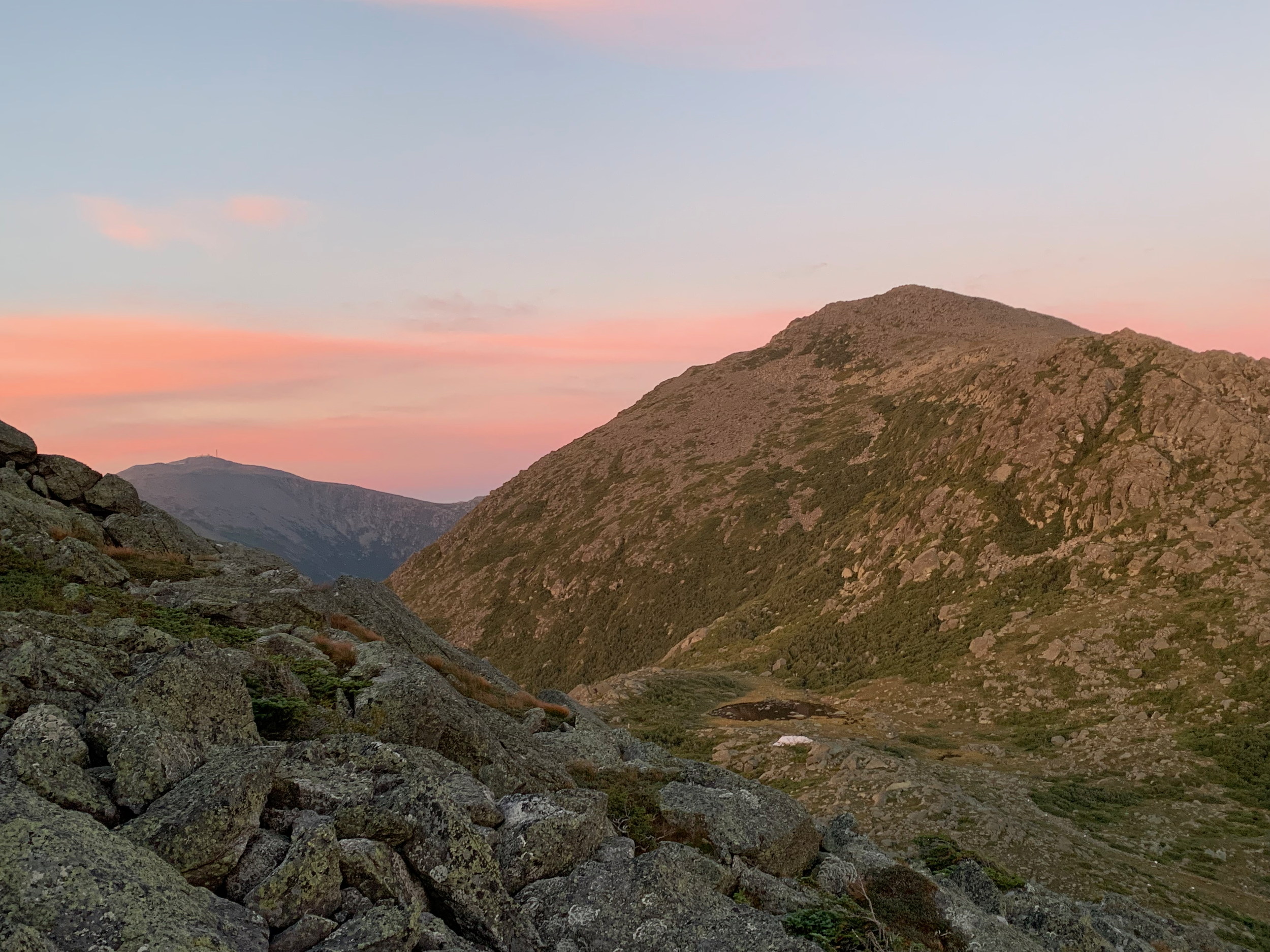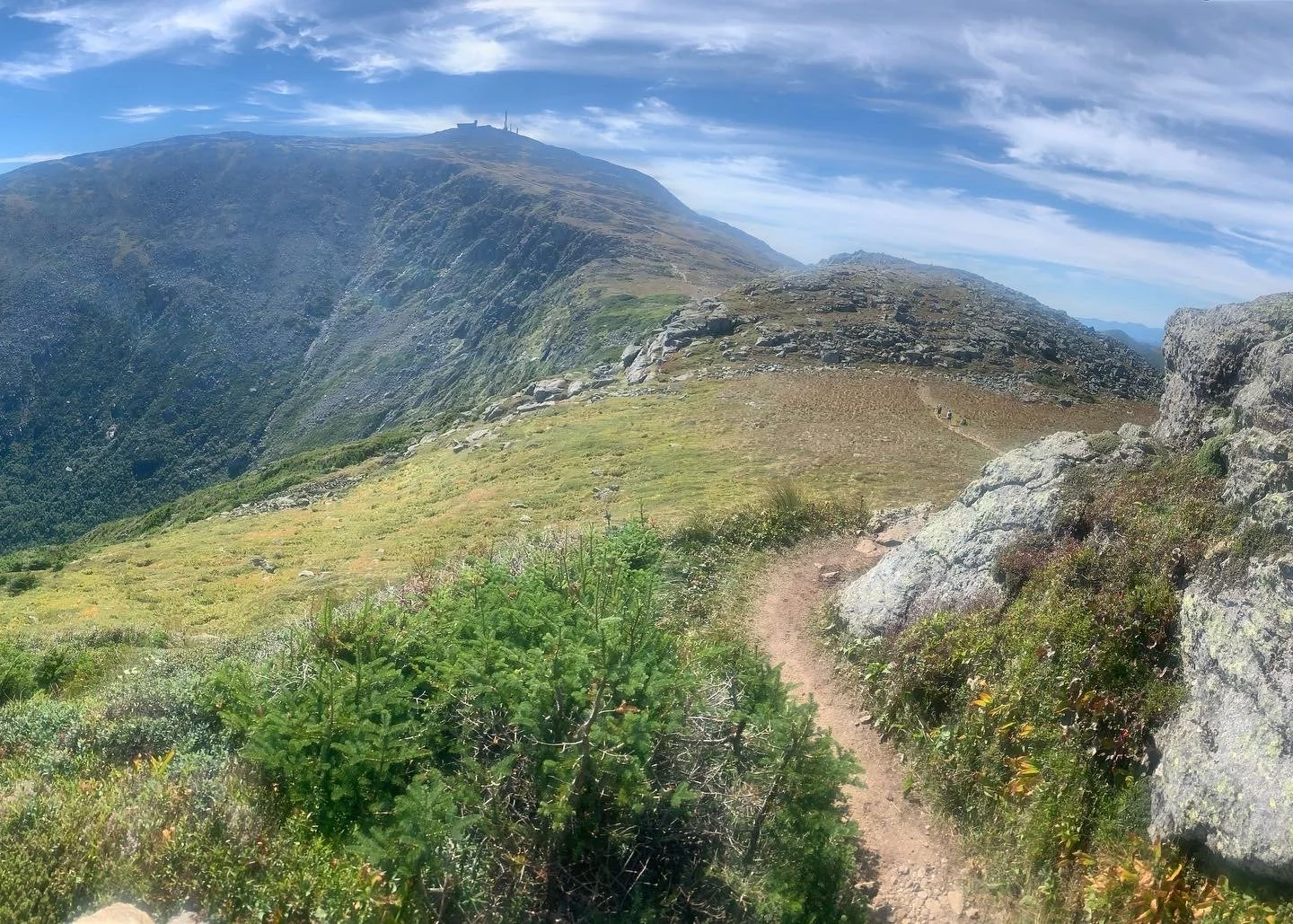The 5 Best Hikes in New Hampshire
Looking out at the northern Presidential peaks that exist in this beautiful state.
If you’ve ever driven up 93-North through New Hampshire on a bluebird day, then perhaps you know the feeling of catching a glimpse of Crawford Notch in the distance. For many, this view is what makes them say, “finally, I am home.”
There are some people who have lived in this state their entire lives without stepping foot in the White Mountain National Forest, and there are others who drive over four hours every weekend to explore the natural scenery that the state has to offer. It’s safe to say, New Hampshire is an outdoor enthusiast’s paradise. Once one discovers the untouched, unknown beauty that the mountainous landscapes and hiking trails here offer, there’s no looking back.
If this is your first time making your way to hiking trails in New Hampshire, then you probably need some guidance on what to explore while here. From easy hikes to hard traverses, these are the five best hikes in New Hampshire, whether you’re a beginner or experienced hiker.
1. Mount Willard
Crawford Notch
This beginner-friendly hike offers breathtaking views of the notch.
While heading down Route 302 to the trailhead of Mount Willard, you’ll eventually enter Crawford Notch State Park. This family-friendly area is the starting point for many popular hikes, such as the Mount Tom, Field, Willey, and Avalon Loop, Mount Pierce and Jackson, which are both on the south side of the Presidential Range, and easier ones, such as Elephant Head, which is great one to do with kids.
For first-time hikers, Mount Willard, which is on the 52-With-A-View list and located in the Willey Range, is a great choice for getting your feet wet with exploring the White Mountains. The trail begins near Crawford Notch Railroad Staion, where you’ll hike for 0.1 miles on Mount Avalon Trail until you get to a junction, where you’ll then turn left on Mount Willard Trail. This 3.1-mile, out-and-back hike is short and not too difficult, yet strenuous enough where those new to hiking can become familiar with White Mountain terrain, their stamina, and hiking gear.
The views from the top of Mount Willard seem too good to be true, which is why it’s such a popular hike for beginner and experienced hikers alike. You’ll feel tucked right into the Crawford Notch, and it brings you this sense of belonging that makes you want more. At the summit, there is plenty of rock space to relax, take in the view, and enjoy a filling snack when the weather cooperates.
2. Welch-Dickey Mountain Loop
Chase the Sun
You can’t go wrong with Welch Mountain for sunrise.
The Welch-Dickey Mountain Loop near Waterville Valley is one of my go-to hikes in the White Mountains. I’ve done it for sunrise and in every season—from during peak foliage to on snowy days with my friends. What I love about this hike is how easy it is to get to from southern New Hampshire and all of the view points on the way up. On this moderate, 4.5-mile hike, you’ll cross a brook, pass by birches and maples, and hike up to several rock ledges that offer stunning views of the Sandwich Range Traverse.
You’ll get your first view 1.3 miles into the hike, where you’ll approach a wide-open, pictureasque ledge. Shortly after, you’ll come up to Welch mountain, which is one in five places where jack pine trees still survive in the state. On your way there, be cautious because the rocky ledges can get slippery. In another half a mile, you’ll come up to Dickey Mountain before descending two miles back to the car. I have found that it’s easy to go off trail on this hike, so be sure to have a paper or digital map handy at all times.
3. Mount Lafayette and Franconia Ridge Loop
Franconia Ridge
This heavenly hike will get you hooked to the White Mountains.
It would be wrong to write an article about the best hikes in New Hampshire without mentioning the Mount Lafayette and Franconia Ridge Loop. In fact, National Geographic once named it one of the top hikes in the entire world! I first fell in love with the White Mountains in 2018 when I did this hike for the first time. There’s nothing like walking across the ridge on a bluebird day and taking in 360 views of the Franconia Range and other peaks in the distance.
The most popular way to tackle this hike is by going counter-clockwise up Falling Waters Trail. This 3.2-mile climb passes by a beautiful waterfall and climbs to Little Haystack, where you’ll get your first view of the Franconia Ridge. The 1.5-mile walk across the ridge makes you feel like you are on top of the world. The gothic rock formations, narrow trail, and excitement you feel makes the difficult climb all worthwhile.
After summiting Mount Lincoln and Lafayette, you’ll descend Greenleaf Trail and get a view of Eagle Lake by Greenleaf Hut. You can stop in the hut for a break from descending for 2.9 miles down Old Bridle Path and back to your car. For even more information on the Mount Lafayette and Franconia RIdge Loop, check out my full guide.
4. Presidential Traverse
First Light
Catch a sunrise on Mount Madison before crossing the entire Presidential Range.
The Presidential Traverse goes over seven official 4,000 footers: Mount Madison, Adams, Jefferson, Washington, Monroe, Eisenhower, and Pierce. For the extended version, hikers can also add in Jackson. This is easily the most exhilarating hike in New Hampshire, and it is great for those who are up for an epic journey. This 20-mile day with 9,000 to 10,000 feet of elevation gain is one of those hikes that make you realize what you are truly capable of. There’s nothing like catching a sunrise on Mount Madison before moving your legs for 15+ hours over some of the most technical, rugged terrain in the White Mountains. Once you complete the hike, you’ll unlock new potential in yourself.
You’ll start at Appalachia Trailhead—preferably early, my friends and I started at 2:30 am—and make your way up Valley Way for 3.8 miles and then Osgood Trail for 0.5 miles to Mount Madison. It’s recommended to do the traverse north to south so your legs are fresh for the bigger summits. From the summit, you’ll make your way for roughly 1.4 more miles to Mount Adams via Gulfside Trail to Airline Trail. Then, you’ll hike down to the Thunderstorm Junction and connect back with Gulfside Trail and hike within the Great Gulf. This is one of the most scenic spots on the traverse that you’ll get to experience before climbing 0.8 miles up to Mount Jefferson. Then, you can either summit or bypass Mount Clay. I highly recommend you summit Clay—it’s one of the best peaks in my opinion, and it only adds 0.3 miles to the day.
The Tallest Point
Enjoy the exposed ridge from Jefferson to Washington.
After that, you’ll hike 1.4 miles to Mount Washington, the tallest mountain in the state. This is the last big push of the day, so be sure to keep fueling your body with the best hiking snacks and moving onward. At Mount Washington, you can get in some real food, use the bathroom, and rest your legs for a minute before heading to the southern side of the range. Do not stay too long because you still have three more peaks to go, or four if you include Jackson.
The second part of the traverse goes over Crawford Path. You’ll hike 1.5 miles to Lake of the Clouds Hut and 0.3 up to Mount Monroe before heading 2.1 miles to Mount Eisenhower and then 1.2 miles to the Webster Cliff Trail junction. From here, climb an easy 0,1 miles to Mount Pierce before descending 3.2 miles to your carspot. You did it!
As one of the most difficult hikes in all of New England, this hike should only be attempted by experienced hikers. If you plan on attempting a Presidential Traverse, be sure to check the higher summits forecast, plan a few bail out spots, and fuel, hydrate, and rest your body properly days before the hike.
5. Zealand-Bonds Traverse
Bondcliff
This remote rock is what living on the edge feels like.
Although just as long in miles as the Presidential Traverse, the 20-mile Zealand-Bonds Traverse is not as strenuous, so it’s a good one to start with to get comfortable with longer days. Located in the Pemigewassett Wilderness, this hike is one of the most remote spots in the White Mountain National Forest. On it, you’ll climb to Mount Zealand, Guyot, West Bond, Bond, and Bondcliff. What makes it special is how far off the grid it is—you won’t hear the sounds of any cars or see any roads in the distance. It’ll just be you, the mountains, and solitude.
Most hikers will begin their journey on Zealand Trail and drop a car at Lincoln Woods for the end of the hike. To start, you’ll hike up Zealand Trail for 2.5 miles over boardwalks and past swamps to Zealand Hut. It’s a pretty easy section, Then, you’ll climb up Twinway for about one mile to Zealand Cliff, which is my favorite spot in the White Mountains! In the spring and summer, this area has stunning wildflowers and so much plant life. It’s one of my favorite things about this traverse.
Then, you’ll hike another 1.5 miles on Twinway and then 0.1 on the spur to Zealand Mountain, which has no views, but it’s still a cool little spot in the woods. I found that this section is pretty easy to cruise over. Then, you’ll continue for another mile to Mount Guyot, which isn’t an official summit on the 4,000-footer list, but it’s still an incredible peak with breathtaking views. Continue past Guyot Shelter and to the West Bond Spur Junction for 0.7 miles before branching off to West Bond. This summit has some of the best views in the entire whites, and you still have two more peaks to go!
Mount Bond
A view that is worth the climb.
Continue for another half mile to Mount Bond. I suggest stopping here to snack on something with carbohydrates so you can push one more mile to Bondcliff. This is the spot where you truly feel ike you’ve entered the remote wilderness—it’s quiet, open, scenic, and out of this world. Once you stand on the edge of Bondcliff and look out at the Pemigewassett Wilderness, you’ll be in awe. After that, you’ll descend about three miles and then have six miles of flat walking in Lincoln Woods. This walk is often referred to as the “death march,” but a walk in the woods is always better than working, right?
One of the best parts about hiking in New Hampshire is that there is a trail out there for every experience level. If you are new to hiking overall, then feel free to check out my guide on the Easiest 4,000-Foot Mountains in New Hampshire. I suggest starting with something smaller, such as Mount Willard and the Welch-Dickey Mountain Loop, before making your way to some 4,000 footers. Before you know it, you’ll be completing a single-day Presidential Traverse—trust me!








